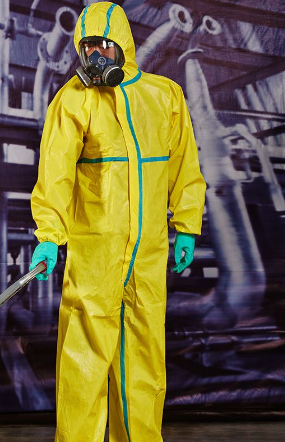Protective clothing plays a pivotal role in keeping individuals safe in various environments, from industrial workplaces to outdoor adventures. Whether you're facing potential hazards at work or simply gearing up for an outdoor excursion, the right protective clothing can make a significant difference in your safety and comfort. To help you make informed decisions, here are ten essential considerations to keep in mind when selecting protective clothing.

Before choosing protective clothing, it's crucial to understand the environment and the potential hazards you may encounter. Are you working in an industrial setting with chemical exposure? Are you heading into the wilderness where weather conditions can be extreme? Identifying the specific risks will guide your clothing choices.
Familiarize yourself with safety standards and regulations relevant to your situation. Whether it's workplace safety standards or outdoor activity guidelines, knowing the rules ensures your protective clothing complies with necessary requirements. Adhering to these standards is essential for your safety.
The choice of material is a critical aspect of protective clothing. Depending on your needs, consider materials such as flame-resistant fabrics, high-visibility textiles, or moisture-wicking materials. The material should align with the hazards you'll encounter while providing comfort and breathability.
Protective clothing should fit you properly to offer the best protection and comfort. Ill-fitting gear can compromise safety and hinder your ability to move effectively. Look for clothing that allows for ease of movement without being too loose or restrictive. Adjustable features can help customize the fit.
Durability is paramount, particularly for protective clothing exposed to challenging conditions. Inspect the stitching, seams, and overall construction of the clothing. Seek reinforced areas in high-wear zones. Durable gear not only ensures better protection but also offers long-lasting value.
In environments where heat and humidity are concerns, breathability is a crucial factor. Look for protective clothing with ventilation options, moisture-wicking properties, or breathable fabrics. Proper breathability helps prevent overheating and discomfort during extended wear.
High-visibility clothing is essential in low-light conditions or areas with heavy traffic. Such clothing is often a requirement in workplace safety. Ensure that your protective clothing meets the visibility standards for your environment, enhancing your safety.
For those exposed to hazardous chemicals, chemical-resistant protective clothing is non-negotiable. Verify that the clothing material is designed to withstand exposure to the specific chemicals you'll encounter. Pay attention to the resistance of seams and closures as well.
In emergency situations, the ease of donning and doffing protective clothing can be critical. Choose designs with straightforward closures, zippers, or snaps that can be operated while wearing gloves or in low-visibility conditions.
While cost is a factor, prioritize quality and safety over price. High-quality protective clothing may come with a higher initial cost but proves cost-effective in the long run due to its durability and effectiveness in safeguarding your well-being.
In conclusion, the process of selecting protective clothing should involve a thorough assessment of your needs, compliance with safety standards, choice of material, proper fit, durability, breathability, visibility enhancement, chemical resistance, ease of use, and a focus on quality. These considerations, combined with careful research and evaluation, will ensure that your protective clothing not only keeps you safe but also provides comfort and functionality tailored to your specific environment and risks. By making informed choices, you can confidently face challenges while staying protected in style.
Next
None
Comments
Please Join Us to post.
0